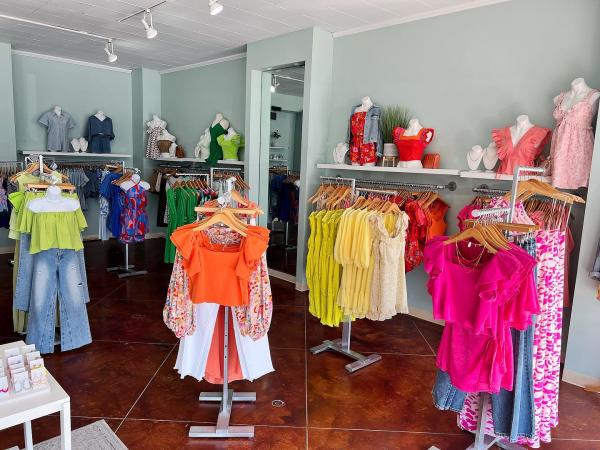A Deep Study the World of High-Fashion Runways: Comprehending Clothing as Art
Developers, a lot like masterful musicians, weave intricate narratives through type, shade, and textile, challenging conventional norms and redefining charm criteria. As we explore these sartorial spectacles, we must consider: what function does style play in forming societal worths, and just how does it show the ever-changing tapestry of human feeling and identity?
The Evolution of Runway Shows
The trajectory of path shows has transformed significantly over the decades, developing from unique sector occasions to fascinating spectacles that blend style with art. Commonly, runway programs made love events, kept in ateliers or tiny venues, mostly attended by purchasers and industry insiders. These early discussions concentrated on the garments' craftsmanship and industrial stability, using a practical and straight display screen of seasonal collections.
As the apparel industry broadened, the nature of runway shows began to alter. The 1970s and 1980s noted a transforming factor, with developers looking for to differentiate themselves via even more theatrical discussions. This age saw the rise of sophisticated sets, choreographed models, and thematic stories, advertising a brand-new age where the runway became an experiential platform. The programs changed into a kind of storytelling, where each collection conveyed an unique narrative or idea.
Over the last few years, modern technology and social networks have actually additionally reinvented path shows, making them obtainable to an international target market. Livestreaming and electronic platforms have actually democratized style, allowing enthusiasts worldwide to witness these events in real-time (boutique fashion). This advancement shows a broader cultural shift, where high-fashion paths act as a vibrant intersection of efficiency, innovation, and style
Designers as Enthusiast Artists
Designers in the high-fashion sector have obscured the lines in between practical garment development and the theoretical realm of art. By embracing imaginative disciplines such as sculpture, paint, and progressive installments, designers craft garments that challenge traditional style standards and raise them to art forms.
Visionary designers draw inspiration from a myriad of sources, consisting of abstract art, historical recommendations, and personal stories. They have an one-of-a-kind ability to envision and appear ideas that push the limits of standard fashion, often redefining visual standards in the process. This imaginative resourcefulness is showcased with dramatic silhouettes, cutting-edge products, and intricate workmanship, which welcome audiences to experience fashion as more than just wearable things.
Furthermore, the runway offers as a canvas for these artists, where illumination, songs, and established design coalesce to create immersive experiences. These discussions are not simply display screens of clothing yet are coordinated efficiencies that evoke feeling and prompt thought, affirming the designer's role as a real musician in the modern cultural landscape.
Cultural Influences in Style
Cultural tapestry weaves its detailed patterns into the fabric of style, affecting developers globally. try this web-site The vibrant interchange of social tales, practices, and signs educates and influences collections that grace high-fashion runways.
The impact of society on fashion is typically seen in the reinterpretation of typical garments and patterns. The usage of Japanese bathrobes, Indian saris, or African prints in modern fashion mirrors a mix of cultural credibility and modern-day aesthetics. Designers such as Valentino's Pierpaolo Piccioli and Alexander McQueen's Sarah Burton have been recognized to incorporate rich social concepts into their couture collections, translating background right into wearable art.

Development in Textile and Design
Technology in textile and style regularly improves the landscape of high-fashion, pushing borders and redefining opportunities. In current years, technological innovations have substantially contributed to this evolution, introducing materials that test standard understandings. Textiles embedded with smart fibers, with the ability of changing color or controling temperature, are no more restricted to the realm of sci-fi. Developers are increasingly discovering the assimilation of innovation, such as 3D printing, which enables the production of complicated frameworks that were formerly unthinkable.
The fashion market is seeing a rise in the usage of green materials, acquired from recycled plastics, natural fibers, and also naturally degradable parts. Designers are accepting these products to craft garments that are both aware and visually striking of their ecological footprint.
In terms of layout, avant-garde shapes and speculative forms are continually revolutionizing the runway. By integrating unique materials and innovative techniques, developers cultivate garments that obscure the line between fashion and art, establishing brand-new standards for creativity and expression in the high-fashion sphere.
Impact of Style on Culture
Style wields a profound impact on culture, serving as both a view it now reflection of social identification and a driver for social adjustment (boutique fashion). Via its development, fashion has actually mirrored social shifts, enveloping the zeitgeist of different ages.
In addition, style has the power to bridge social gaps, cultivating understanding and gratitude amongst varied groups. As globalisation speeds up, the cross-cultural exchange of style concepts comes to be significantly significant, promoting inclusivity and diversity. The surge of streetwear, originating from metropolitan subcultures, shows just how style can transcend socio-economic boundaries, granting people a means of self-expression and empowerment.
Fundamentally, fashion my link is not just regarding looks; it is a vibrant force that influences values, mindsets, and social progress (boutique fashion). By constantly communicating with social and cultural currents, style remains an essential component of the cumulative human experience

Verdict
Designers, comparable to visionary artists, orchestrate collections that show identification, feeling, and cultural stories, challenging typical looks. This intersection of style and artistry not just astounds target markets globally yet also affects societal understandings and promotes a much deeper recognition for cultural variety.

Cultural tapestry weaves its elaborate patterns into the fabric of fashion, affecting developers internationally.Style wields an extensive influence on culture, serving as both a reflection of social identification and a driver for social modification.